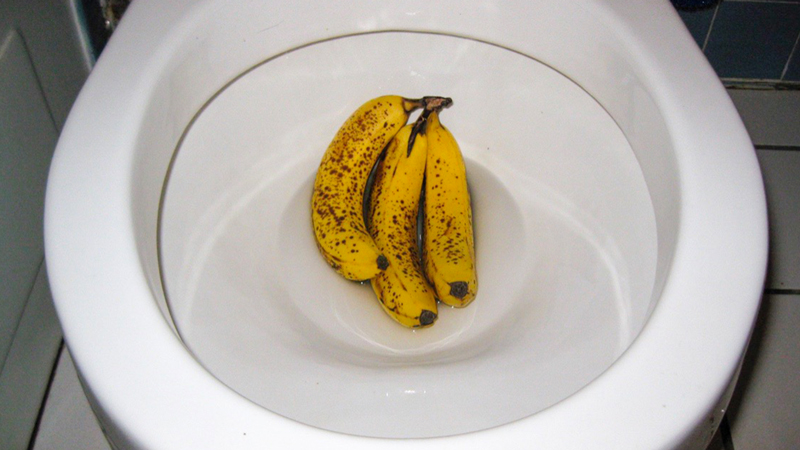Are You Allowed to Dispose of Food Down the Toilet?
Are You Allowed to Dispose of Food Down the Toilet?
Blog Article
They are making a few good annotation related to Flushing Food Down the Toilet? as a whole in the content which follows.

Introduction
Many people are often confronted with the dilemma of what to do with food waste, particularly when it involves leftovers or scraps. One usual inquiry that develops is whether it's all right to purge food down the commode. In this short article, we'll explore the reasons that individuals might consider flushing food, the consequences of doing so, and different approaches for proper disposal.
Reasons individuals may consider purging food
Lack of understanding
Some individuals may not recognize the possible injury triggered by flushing food down the bathroom. They might erroneously think that it's a safe method.
Comfort
Purging food down the bathroom might feel like a quick and easy solution to taking care of undesirable scraps, specifically when there's no nearby trash can offered.
Negligence
In some cases, individuals might simply select to flush food out of sheer idleness, without thinking about the effects of their activities.
Effects of flushing food down the commode
Ecological influence
Food waste that ends up in waterways can add to contamination and harm water communities. Furthermore, the water utilized to flush food can stress water sources.
Pipes issues
Flushing food can result in blocked pipelines and drains, triggering pricey plumbing repair services and troubles.
Kinds of food that must not be flushed
Fibrous foods
Foods with coarse textures such as celery or corn husks can obtain entangled in pipes and trigger obstructions.
Starchy foods
Starchy foods like pasta and rice can absorb water and swell, causing clogs in pipelines.
Oils and fats
Greasy foods like bacon or cooking oils need to never be purged down the commode as they can solidify and cause clogs.
Proper disposal techniques for food waste
Making use of a garbage disposal
For homes geared up with garbage disposals, food scraps can be ground up and flushed with the pipes system. Nonetheless, not all foods appropriate for disposal in this manner.
Recycling
Certain food product packaging materials can be recycled, minimizing waste and reducing ecological impact.
Composting
Composting is an environment-friendly means to get rid of food waste. Organic products can be composted and utilized to enhance soil for gardening.
The value of correct waste monitoring
Lowering environmental harm
Correct waste management techniques, such as composting and recycling, help minimize contamination and protect natural deposits for future generations.
Shielding pipes systems
By avoiding the technique of flushing food down the bathroom, house owners can protect against expensive plumbing repair work and keep the integrity of their pipes systems.
Conclusion
Finally, while it might be tempting to flush food down the bathroom for ease, it's important to comprehend the possible repercussions of this action. By adopting appropriate waste administration techniques and dealing with food waste responsibly, individuals can add to healthier plumbing systems and a cleaner setting for all.
FLUSH FOOD DOWN THE TOILET?
FLUSHING FOOD CAN CAUSE BLOCKED DRAINS IN YOUR HOME
All of the plumbing fixtures in your home are connected to the same sewer pipe outside of your home. This outdoor sewer pipe is responsible for transporting all the wastewater from your home to the Council sewer mains. Even small pieces of food that go down the kitchen sink can cause problems for your sewer. It should therefore be obvious that flushing larger bits of food, such as meat, risks a clog in either the toilet itself or the sewer pipes. Flushing greasy food is even more problematic because oil coagulates when it cools, coating the interior lining of your pipes.
THE TOILET IS NOT A BIN
Food isn’t the only thing that people shouldn’t be flushing down the toilet. People use the toilet to dispose of all kinds of things such as tampons, makeup wipes, dental floss, kitty litter and even underwear. Water goes to great lengths to educate residents about the high costs and stress placed on wastewater treatment systems simply from people flushing the wrong stuff down the toilet. It costs taxpayers millions of dollars each year, and homeowners thousands in blocked drain repairs.
FLUSHING FOOD IS A WASTE OF WATER
Flushing food is a waste of our most precious resource - water. In June this year Level 1 water restrictions were introduced to protect water supply from drought conditions. Much of New South Wales continues to be affected by prolonged drought with recent figures revealing up to 97 per cent of the state remains in drought. Depending on whether you have a single or dual flush toilet, every single flush uses between five and 11 litres of water. In the current climate this is a huge amount of water to be wasting on flushing food that should be placed in the bin (or better yet, the compost).
https://www.jabplumbingsolutions.com.au/blog/can-you-flush-food-down-the-toilet

We were shown that article about Think Twice Before Flushing Food Down Your Toilet through an acquaintance on another web blog. Sharing is good. Helping people is fun. Thank you for your time. Return soon.
Book Services Report this page